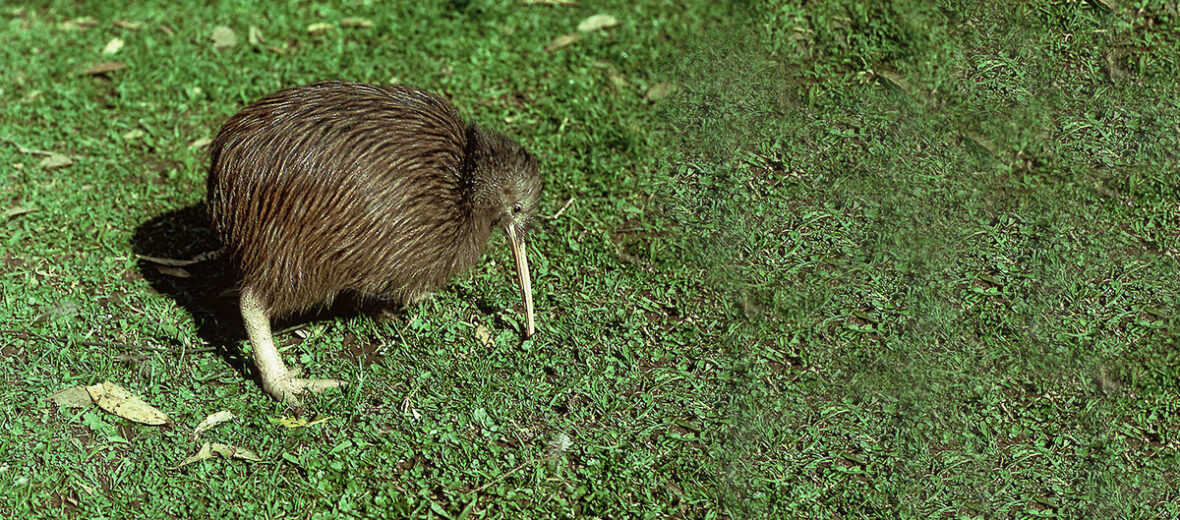
The north island brown kiwi, aka northern brown kiwi, can be found in the north island of New Zealand. These flightless birds are a unique and fascinating species. They prefer thick, sub-tropical and temperate forests. However, they can also be found among farmlands, pine plantations, and scrublands. These birds face the threats of habitat loss and destruction at the hands of farming and ranching; and invasive species, and with them disease, predation, and competition for food. The IUCN lists these cool avians as Vulnerable. Their population trend is stable as of 2017.
First the Stats…
Scientific name: Apteryx mantelli
Weight: Up to 8.5 lbs.
Length: Up to 2 feet
Wingspan: Up to 1 inch
Lifespan: Up to 35 years
Now on to the Facts!
1.) These birds number an estimated 20,000- wild individuals.
2.) Kiwis are solitary and only come together to mate.
3.) They are also territorial and will fight other kiwis if they happen into one another’s territory.
4.) The north island brown kiwi is semi fossorial (spends part of their life in their burrow that they construct themselves.
5.) Communication is vocal and consists of various hisses, grunts, and snorts.
But wait, there’s more on the north island brown kiwi!
6.) Their common call sounds like “kee-wee”, which is where they get their name.
7.) Beetles, earthworms, snails, crayfish, various other insects, amphibians, eels, berries, and fruit are all on the menu.
Did you know…?
Kiwis are on record as laying the largest egg compared to their body size of any bird species in the world! The eggs weigh in at up to 1 lb. which is nearly 20% of the female’s body weight.
8.) Northern brown kiwis are monogamous (mate for life). However, if a female spots a more attractive male, she will “divorce” her partner and mate with the new male.
9.) The nest is nothing more than a burrow carved out in the ground.
10.) Females lay 2 eggs up to 3 times a year, and the male incubates them for up to 90 days.
But wait, there’s still more on the north island brown kiwi!
11.) Chicks are born precocial (self sufficient and fully developed).
12.) The chicks leave the nest in just 1 week and are able to feed themselves at that time.
Did you know…?
Only 5% of kiwi chicks survive to adulthood!
13.) Stoats, introduced cats, and dogs are their primary predators.
14.) Northern brown kiwis are the only known kiwi species found in zoos around the world.
15.) Due to their stubby, short wings and heavy bones that are filled with marrow, these birds are a case study in de-evolution, in that they evolved not to use flight, like other birds. However, they have developed a sharp claw at the end of their wing.
But wait, there’s still a tad more on the north island brown kiwi!
16.) These kiwis are nocturnal (active at night).
17.) Kiwis are the only known bird to have nostrils on the tip of their snout.
18.) Due to introduced animals, these kiwis face other threats too, like various diseases such as Coccidiosis (a gastrointestinal infection caused by microscopic parasites called coccidia that live in the lining cells of the intestine), and avipoxvirus infections, aka fowl pox. There are 2 forms of fowl pox: The dry form causes warty
growths on the skin, especially on unfeathered parts like the legs, feet, and the eyelids; whereas the wet form causes lesions in the respiratory tract and upper gastrointestinal tract.
Now a Short North Island Brown Kiwi Video!
Be sure to share & comment below! Also, check out the Critter Science YouTube channel. Videos added regularly!
Want to suggest a critter for me to write about? Let me know here.
Some source material acquired from: Wikipedia & IUCN
Photo credit: Dick Veitch



